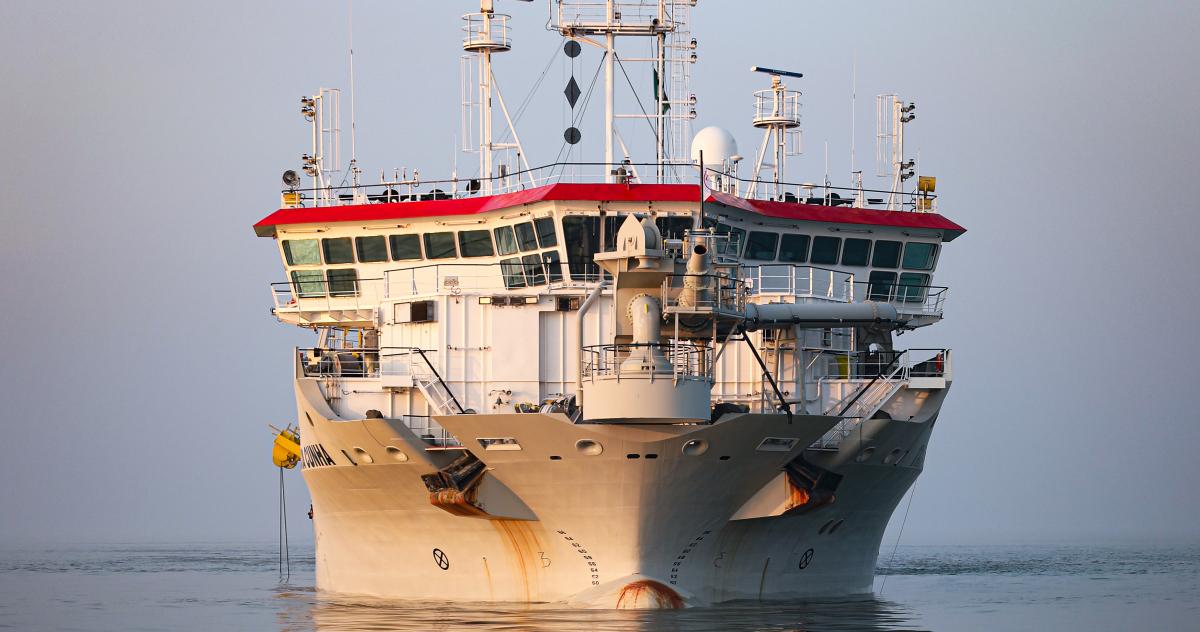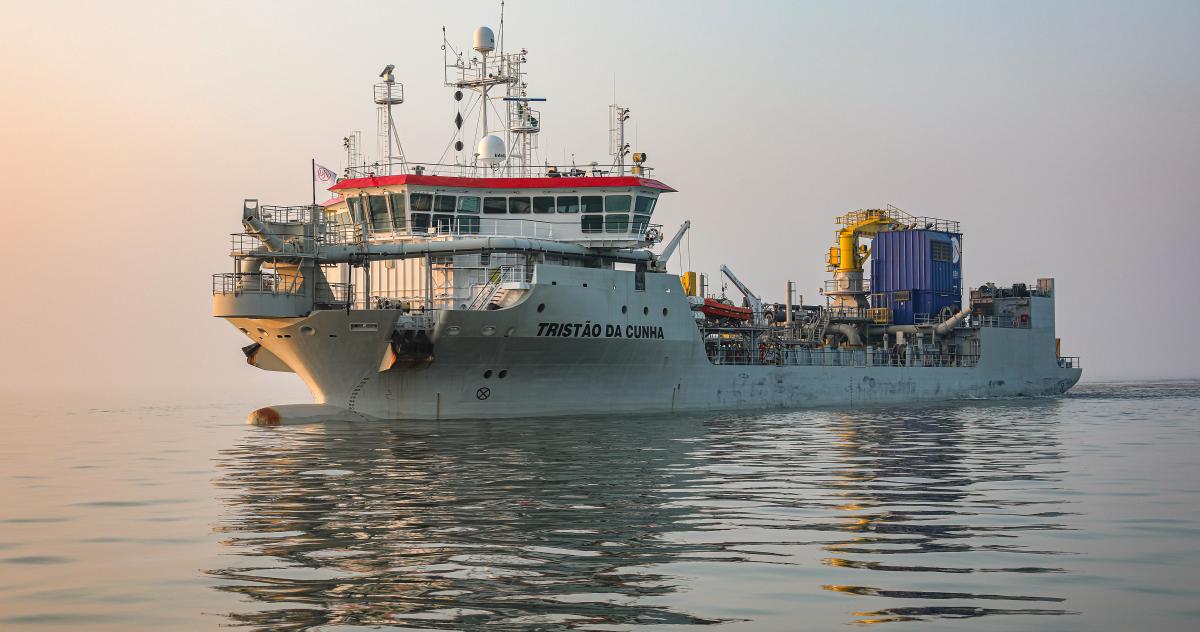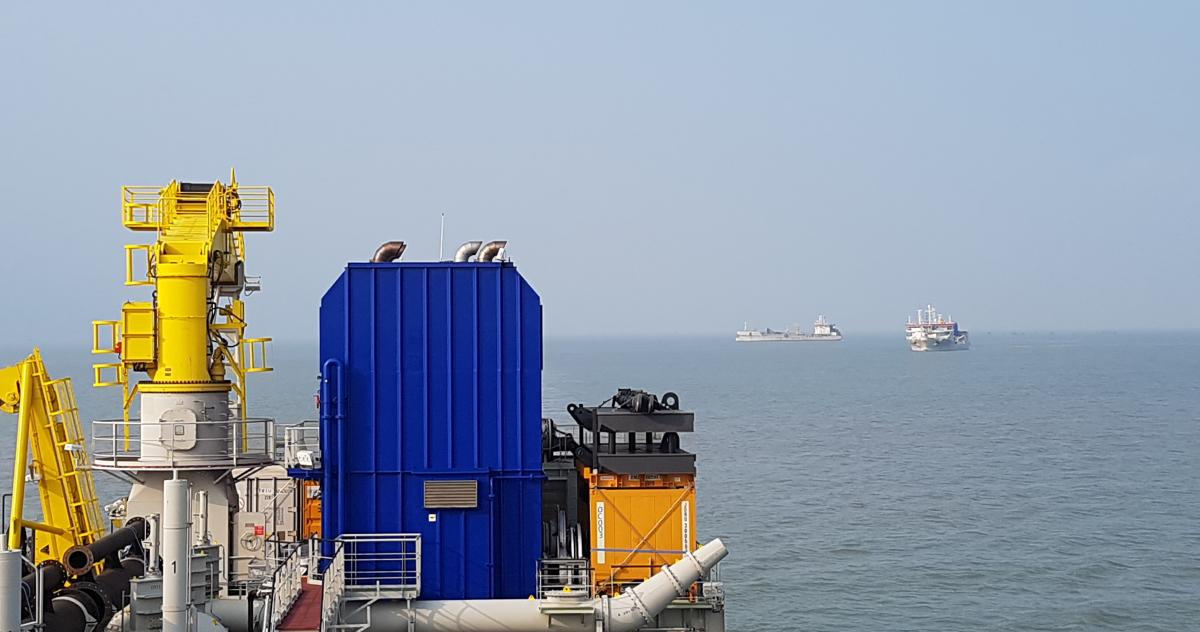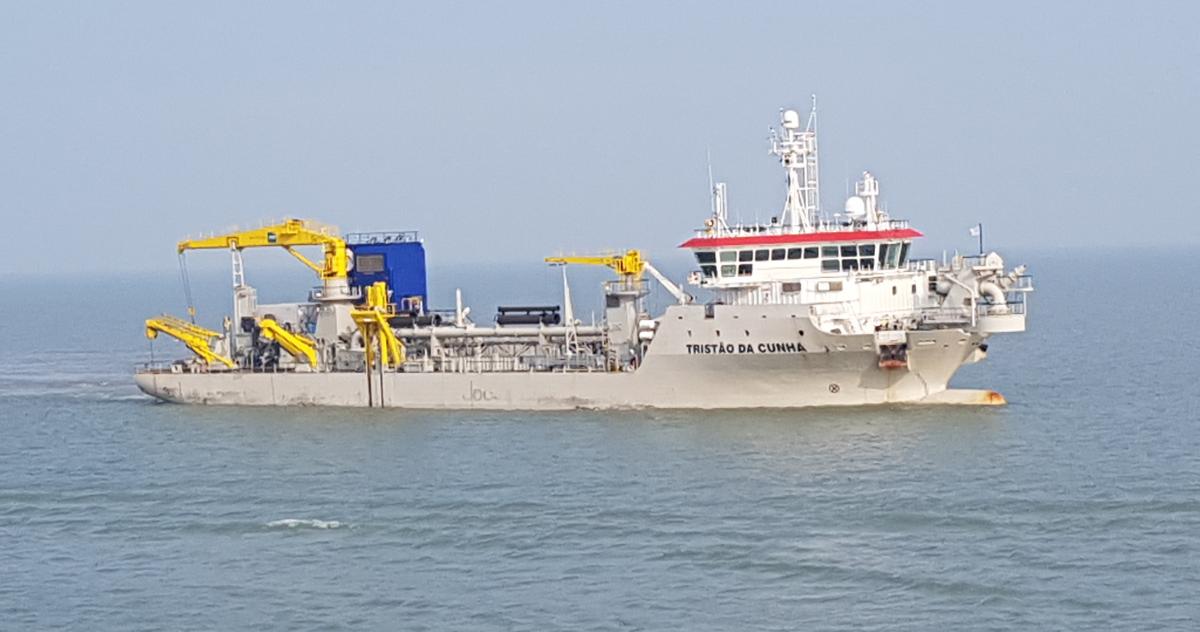Two Jan De Nul vessels with ultra-low emissions aid Flanders in minimalising impact on environment
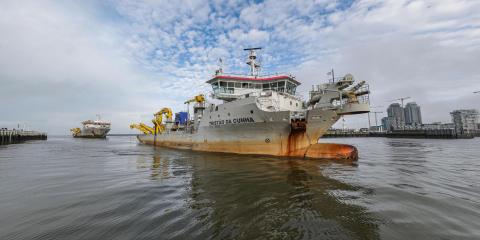
Both Trailing Suction Hopper Dredgers are among the newest generation of the Jan De Nul fleet: Ultra-Low Emission vessels (ULEv). They are fitted with a filter system that reduces exhaust gases and captures nanoparticle emissions.
The technology complies with the stricter European EURO STAGE V directives regarding emissions on land and waterways. This makes the vessels the optimal equipment for this dredging project, in which the Flemish Government stipulated that dredging operations must be sustainably executed, with strict criteria on NOx-emissions.
Bart Praet, Ass. Area Manager at Jan De Nul Group: “Our employer, the Flemish Government, has committed fully to sustainability in maintenance dredging works since this year. This stimulates us in this way to deploy our ULEv technology in this region, like in the Port of Ostend, in the middle of a densely populated city centre. This technology is without a doubt one of THE keys to make sure the nitrogen-files don’t get stuck for harbour companies and governments in the licensing trajectory.”
Jan De Nul developed ULEv-vessels.
For ULEv-vessels, Jan De Nul was inspired by the Swiss tunnels below the Alps. The Swiss government requires that all exhaust in the tunnels must be filtered from the air to a minimum, in order to make sure workers in the tunnels are able to breathe clean air. The bi-phased filter system on board of the ULEv-vessels does the same thing: it reduces NOx-emissions by means of a catalysator up to 99% and it filtrates the emissions of nanoparticles with a filter to levels lower than a Euro 6 truck.
The vessels of Jan De Nul often work in ports, on rivers and near the coast, where emissions have an impact on the people living nearby. For this reason, Jan De Nul raises the bar high for itself in reducing maritime emissions. In 2015, the first ULEv-vessels entered the Jan De Nul fleet. Since then, all new vessels are equipped with this technology.
Race for better air quality
Sanderus arrived in 2018 as the first ULEv in Belgium and receives company from Tristão da Cunha for the dredging of Port of Ostend. The ULEv can be easily identified by the blue funnel.
With its ULEv-vessels, Jan De Nul wants to be the absolute leader in the race for better air quality. The ULEv-vessels dive below 1.0g/kWh, while the stricter European STAGE V directives demand a maximum of 2.0-2.5 g/kWh.
The ULEv-technology is without a doubt one of THE keys to make sure the nitrogen-files don't get stuck for harbour companies and governments in the licensing trajectory.
Bart Praet
Ass. Area Manager at Jan De Nul Group
